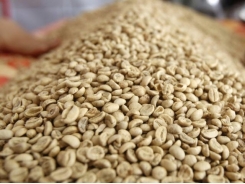Northern corn leaf blight genes identified in new study

Resistance genes have been identified in corn, but fungal disease has found ways to get around corn plant’s defenses.
Corn growers in the Midwest know the symptoms of northern corn leaf blight, with greenish-gray lesions on the leaves that can add up to major yield losses if not detected and treated early, according to the University of Illinois.
Resistance genes have been identified in corn, but the fungal disease has found ways to sneak around the corn plant’s defenses. Now, researchers have figured out how the fungus is outsmarting corn, and they may be able to use this information to help corn plants fight back, an announcement said.
“We were looking for genes in the fungus that trigger disease in corn. With this information, corn breeders could someday build more durable resistance in future hybrids,” said Santiago Mideros, plant pathologist in the department of crop sciences at the University of Illinois.
In a new study published in the journal Phytopathology, Mideros and his colleagues identified two of the genes that cause disease in corn. However, in order to understand the significance of the results, it’s important to know how fungal and corn genes interact.
Several genes help corn resist different strains of northern corn leaf blight: Ht1, Ht2, Ht3 and HtN. These genes may signal proteins that protect the plant from attack by the fungus, but the exact mechanism isn’t known, Mideros explained. Resistance breaks down — with corn becoming susceptible again — when the fungus evolves to avoid detection by the plant.
“When you go through security at the airport, they’re looking for weapons. In the same way, plants are looking for weapons that the pathogen has, but the pathogen can drop one weapon and pick up a different one — something the plant can’t detect. If it has another weapon, it’s still going to be dangerous,” Mideros said.
The interaction between corn and fungal genes has been known for decades, but until now, scientists didn’t know the molecular makeup of those genes in the fungus or where they were located in the genome. To obtain this information, the research team mated different strains of the fungus: one that causes disease on Ht1 corn plants, and one that doesn’t. They then mapped the genes of the resulting progeny.
“Based on data from the progeny, we could detect which gene allows the fungus to cause disease,” Mideros explained. They confirmed the location for one fungal gene involved in the disease, AVRHt1, and found a candidate location for another, AVRHt2. The researchers also identified molecular markers that should make identifying disease-causing strains easier in the future.
“Now that we have molecular markers, we could sample the environment and find out which strains of the pathogen are out there. Eventually, farmers might be able to plant corn varieties that are resistant to specific pathogens present in their area,” Mideros said.
Mideros emphasized that much more work is needed to get to that point in the future, but the first step is now out of the way.
Có thể bạn quan tâm
Phần mềm

Phối trộn thức ăn chăn nuôi

Pha dung dịch thủy canh

Định mức cho tôm ăn

Phối trộn phân bón NPK

Xác định tỷ lệ tôm sống

Chuyển đổi đơn vị phân bón

Xác định công suất sục khí

Chuyển đổi đơn vị tôm

Tính diện tích nhà kính

Tính thể tích ao hồ




 Agriculture sector targets 40 billion USD in export…
Agriculture sector targets 40 billion USD in export…  Asia Coffee-Vietnam trading slows, Indonesia muted
Asia Coffee-Vietnam trading slows, Indonesia muted